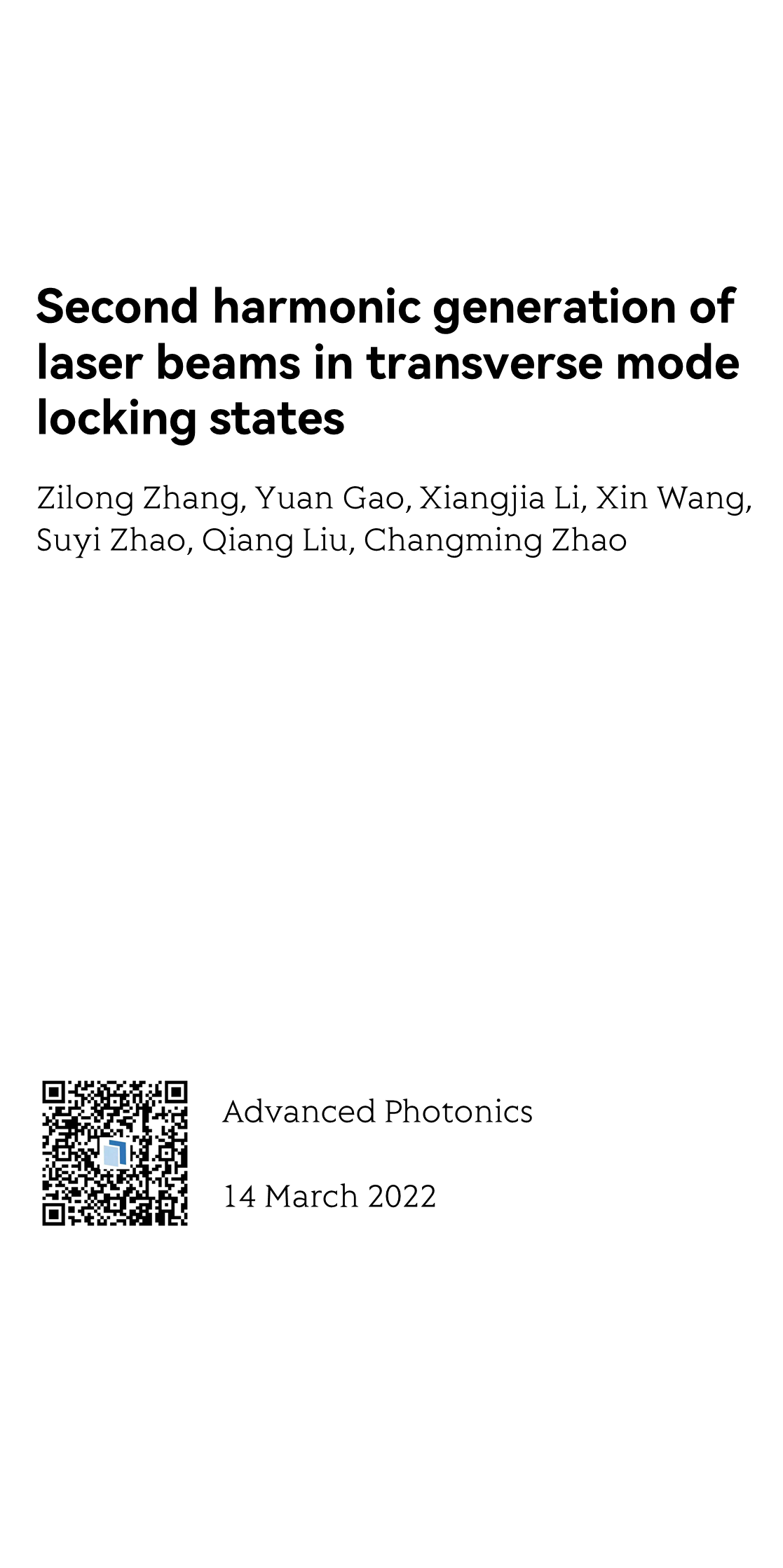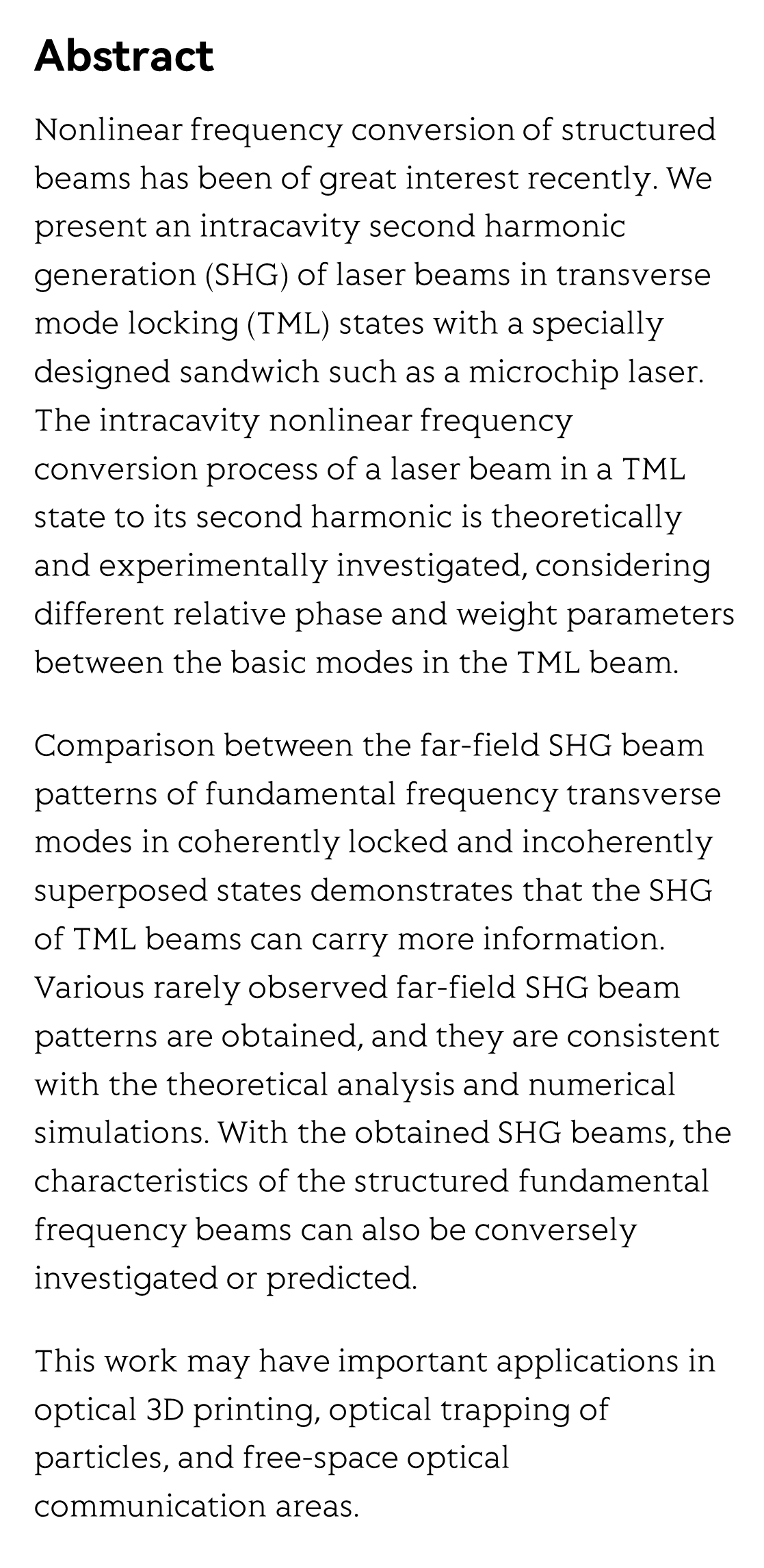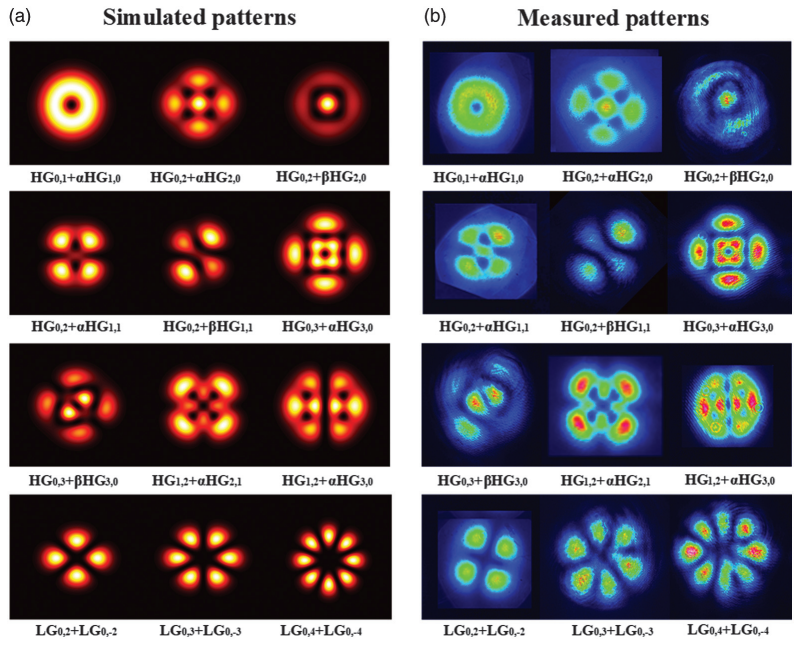(Peer-Reviewed) Second harmonic generation of laser beams in transverse mode locking states
Zilong Zhang 张子龙 ¹ ² ³, Yuan Gao 高原 ¹ ² ³, Xiangjia Li 李向家 ⁴, Xin Wang 王鑫 ¹ ² ³, Suyi Zhao 赵苏怡 ¹ ² ³, Qiang Liu 柳强 ⁵ ⁶, Changming Zhao 赵长明 ¹ ² ³
¹ Beijing Institute of Technology, School of Optics and Photonics, Beijing, China
中国 北京 北京理工大学光电学院
² Ministry of Education, Key Laboratory of Photoelectronic Imaging Technology and System, Beijing, China
中国 北京 光电成像技术与系统教育部重点实验室
³ Ministry of Industry and Information Technology, Key Laboratory of Photonics Information Technology, Beijing, China
中国 北京 信息光子技术工业和信息化部重点实验室
⁴ Arizona State University, School for Engineering of Matter, Transport and Energy, Department of Aerospace and Mechanical Engineering, Tempe, Arizona, United States
⁵ Ministry of Education, Key Laboratory of Photonic Control Technology (Tsinghua University), Beijing, China
中国 北京 光子测控技术教育部重点实验室(清华大学)
⁶ Tsinghua University, Department of Precision Instrument, State Key Laboratory of Precision Measurement Technology and Instruments, Beijing, China
中国 北京 清华大学精密仪器系精密测试技术及仪器国家重点实验室
Abstract
Nonlinear frequency conversion of structured beams has been of great interest recently. We present an intracavity second harmonic generation (SHG) of laser beams in transverse mode locking (TML) states with a specially designed sandwich such as a microchip laser. The intracavity nonlinear frequency conversion process of a laser beam in a TML state to its second harmonic is theoretically and experimentally investigated, considering different relative phase and weight parameters between the basic modes in the TML beam.
Comparison between the far-field SHG beam patterns of fundamental frequency transverse modes in coherently locked and incoherently superposed states demonstrates that the SHG of TML beams can carry more information. Various rarely observed far-field SHG beam patterns are obtained, and they are consistent with the theoretical analysis and numerical simulations. With the obtained SHG beams, the characteristics of the structured fundamental frequency beams can also be conversely investigated or predicted.
This work may have important applications in optical 3D printing, optical trapping of particles, and free-space optical communication areas.
Flicker minimization in power-saving displays enabled by measurement of difference in flexoelectric coefficients and displacement-current in positive dielectric anisotropy liquid crystals
Junho Jung, HaYoung Jung, GyuRi Choi, HanByeol Park, Sun-Mi Park, Ki-Sun Kwon, Heui-Seok Jin, Dong-Jin Lee, Hoon Jeong, JeongKi Park, Byeong Koo Kim, Seung Hee Lee, MinSu Kim
Opto-Electronic Advances
2025-09-25
Dual-frequency angular-multiplexed fringe projection profilometry with deep learning: breaking hardware limits for ultra-high-speed 3D imaging
Wenwu Chen, Yifan Liu, Shijie Feng, Wei Yin, Jiaming Qian, Yixuan Li, Hang Zhang, Maciej Trusiak, Malgorzata Kujawinska, Qian Chen, Chao Zuo
Opto-Electronic Advances
2025-09-25





